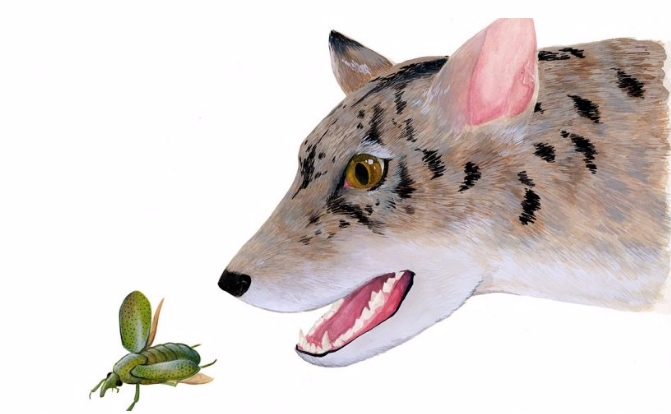There’s a new fossil to add to the list of extinct, ancient creature bones: a bear dog. A researcher came across the fossilized carnivore jawbone in a drawer of the Chicago’s Field Museum, became curious about it. With the help of a colleague, the researcher, Susumu Tomiya, identified that the bone belonged to a long-extinct cousin of dogs, foxes and weasels called the bear dog.
This jawbone and one at the University of Texas comprise a new genus that scientists believe may provide insights into the evolution of dogs and other carnivores. The Chihuahua-sized bear dogs lived some 40 million years ago, and both fossils are closely related types of the animal, now classified in the new genera named Gustafsonia and Angelarctocyon, according to Fox News.
Tomiya, who works at the Field Museum, spends his time taking care of the museum’s extensive fossil collection. “In my spare time I like to walk around the aisles in the collections and open up drawers,” he narrated.
One day I just stumbled on these interesting-looking jaws of a little carnivore.
The jawbone was found in Texas in 1946 and was classified as a carnivore 30 years ago. No one knew what kind of creature it was, according to Tomiya and Jack Tseng of the State University of New York at Buffalo.
Tomiya thought the teeth were reminiscent of bear dogs, but the species he knew were much larger in size and roamed North America, Europe, Asia and Africa. So he and Tseng compared the fossil with the one at the University of Texas and concluded that both filled a gap in the family tree that included canines and other carnivores.
The evolution of bear dogs from small to large match the evolutionary path of other animals that eventually became extinct, the researchers state. Bear dogs were extinct by 5 to 10 million years ago.
These bea rdogs also lived in a time when North America was undergoing a climate change from subtropical to cool and dry. Studying these fossils could help determine what kinds of animals adapt well to that kind of transition, for practical applications in the future.
























